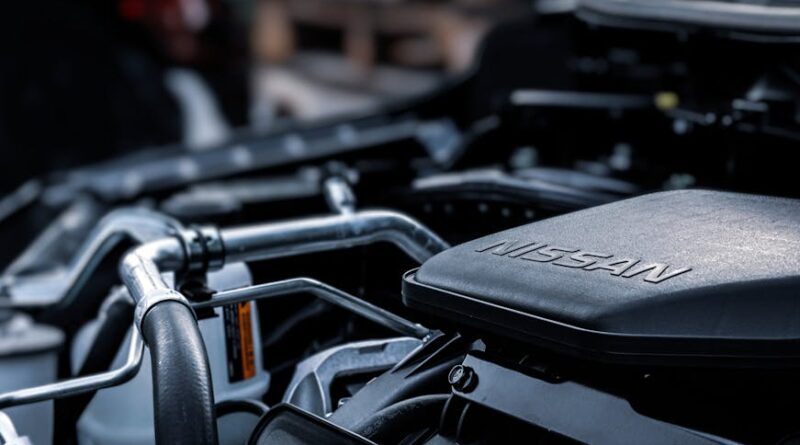Best Practices for Inspecting Rental Vehicles
When it comes to renting a vehicle, whether for a vacation, business trip, or just to get around town, it’s essential to ensure that the vehicle you are getting is in good condition and safe to drive. Inspecting rental vehicles before you drive off the lot can save you a lot of hassle and potential problems down the road. In this comprehensive guide, we will delve into the best practices for inspecting rental vehicles, covering everything from exterior checks to interior inspections and everything in between. Let’s dive in!
The Importance of Inspecting Rental Vehicles

Before we get into the nitty-gritty of how to inspect a rental vehicle, let’s take a moment to understand why it’s so crucial. When you rent a car, you are essentially taking responsibility for that vehicle for the duration of your rental period. Any damage or issues that occur during your rental could end up costing you a significant amount of money if you’re not careful. By inspecting the vehicle thoroughly before you drive off, you can avoid being held liable for pre-existing damage and ensure that you are getting a safe and reliable vehicle to drive.
Additionally, inspecting a rental vehicle can also help you avoid any disputes with the rental company when you return the vehicle. By documenting the condition of the car before you drive off, you can provide evidence if the rental company tries to charge you for damage that was already there. It’s always better to be safe than sorry when it comes to rental cars.
Exterior Inspection

When inspecting a rental vehicle, it’s essential to start with the exterior. Here are some key things to look out for:
1. Body Damage
Walk around the vehicle and carefully inspect the body for any dents, scratches, or other damage. Take note of any issues you find and make sure to document them with photos or written notes. This will help protect you from being held responsible for pre-existing damage.
2. Lights and Signals
Check that all the lights are working correctly, including the headlights, taillights, brake lights, and turn signals. Make sure to test them all before you drive off to ensure your safety on the road.
3. Tires
Inspect the tires for any signs of wear or damage. Check the tread depth and look for any bulges or cuts in the tires. Proper tire maintenance is crucial for safe driving, so make sure the tires are in good condition before you hit the road.
Interior Inspection

Once you’ve checked the exterior of the rental vehicle, it’s time to move on to the interior. Here’s what you should look out for:
1. Cleanliness
Inspect the interior of the vehicle to ensure that it has been cleaned and sanitized properly. Look for any stains, odors, or signs of dirt and make sure that everything is in good condition.
2. Dashboard and Controls
Check that all the dashboard lights are working correctly and that the controls for things like the air conditioning, radio, and windshield wipers are functioning as they should. Make sure to test everything before you start driving to avoid any surprises on the road.
3. Safety Equipment
Ensure that the rental vehicle is equipped with essential safety equipment such as a spare tire, jack, and jumper cables. It’s always better to be prepared for any emergencies that may arise during your rental period.
Mechanical Inspection

Aside from the exterior and interior checks, it’s also essential to inspect the mechanical components of the rental vehicle. Here are some key areas to focus on:
1. Engine
Check under the hood to inspect the engine and make sure everything looks clean and well-maintained. Look for any leaks, strange noises, or warning signs that could indicate potential issues with the engine.
2. Fluid Levels
Check the fluid levels in the vehicle, including the oil, coolant, brake fluid, and windshield washer fluid. Make sure they are at the appropriate levels to ensure the vehicle runs smoothly during your rental period.
3. Brakes
Test the brakes to ensure they are responsive and not making any strange noises. Brakes are one of the most critical safety features of a vehicle, so it’s essential to make sure they are in good working order before you hit the road.
Documentation and Reporting
After you have completed your inspection of the rental vehicle, it’s essential to document any issues or damage you found. This documentation will serve as evidence in case there are any disputes with the rental company when you return the vehicle. Here are some tips for proper documentation:
1. Take Photos
Take detailed photos of any damage or issues you find on the rental vehicle. Make sure the photos are clear and well-lit to provide a comprehensive record of the vehicle’s condition.
2. Note Down Any Problems
Make a list of any problems you found during your inspection, including details such as the location of the damage, the extent of the issue, and any other relevant information. This will help you provide a clear report to the rental company if needed.
3. Report to Rental Company
If you find any significant issues with the rental vehicle, make sure to report them to the rental company before you drive off. This will protect you from being held responsible for damage that was not your fault and ensure that the rental company is aware of any pre-existing issues.
Common Misconceptions
One common misconception when it comes to inspecting rental vehicles is that minor damage doesn’t need to be reported. However, it’s essential to document even the smallest scratches or dents to avoid being charged for them when you return the vehicle. It’s always better to be safe than sorry when it comes to rental cars.
Conclusion
Inspecting a rental vehicle may seem like a tedious task, but it’s an essential step to ensure your safety and protect yourself from unnecessary expenses. By following the best practices outlined in this guide, you can make sure that you are getting a reliable and safe vehicle for your rental period. Remember to document any issues you find, report them to the rental company, and test everything before you hit the road. Safe travels!
Whether you’re renting a car for a weekend getaway or a month-long road trip, taking the time to inspect the vehicle thoroughly can make all the difference in your rental experience. By following these best practices for inspecting rental vehicles, you can drive with confidence knowing that you’ve done everything you can to ensure your safety and peace of mind. Happy driving!




